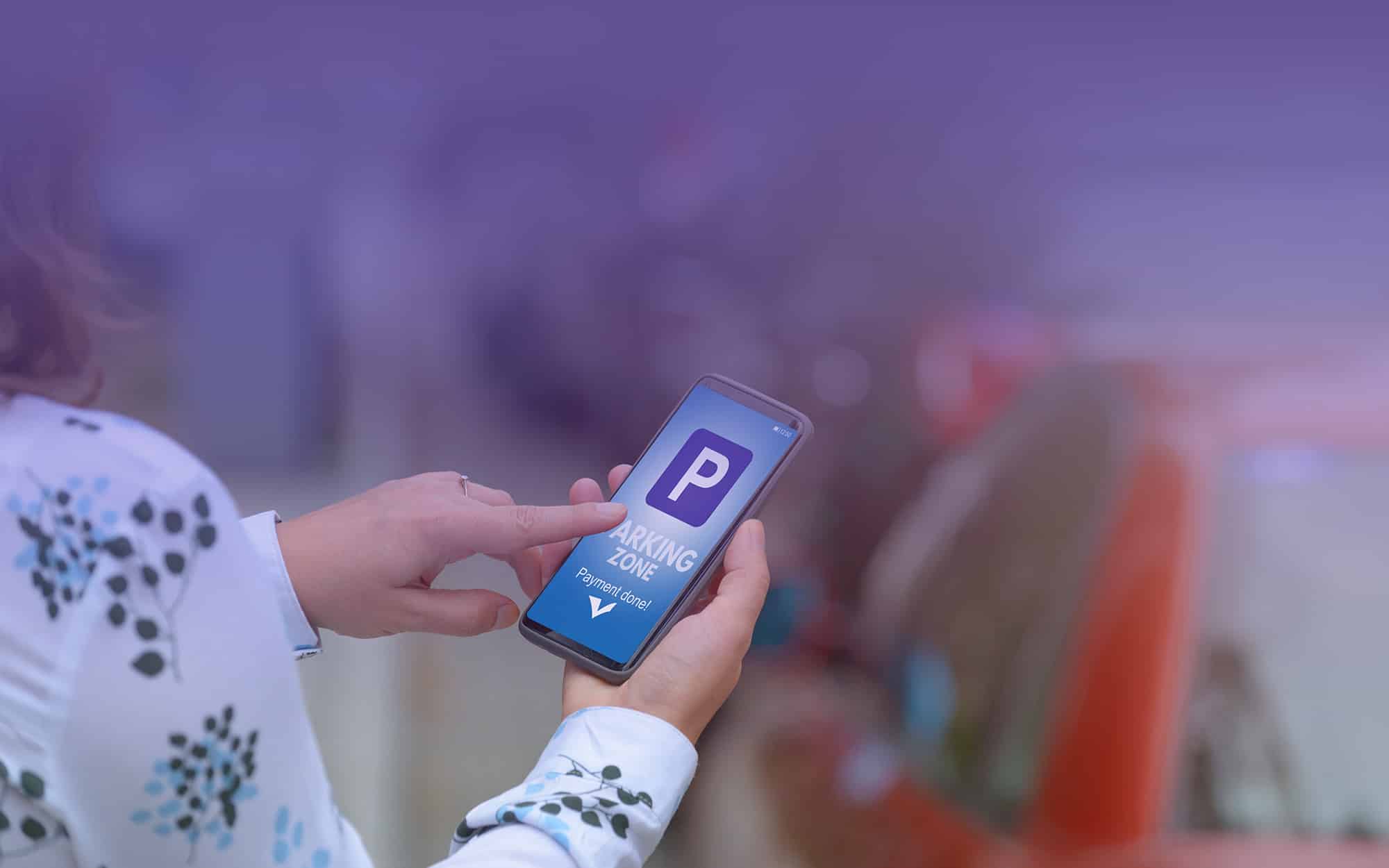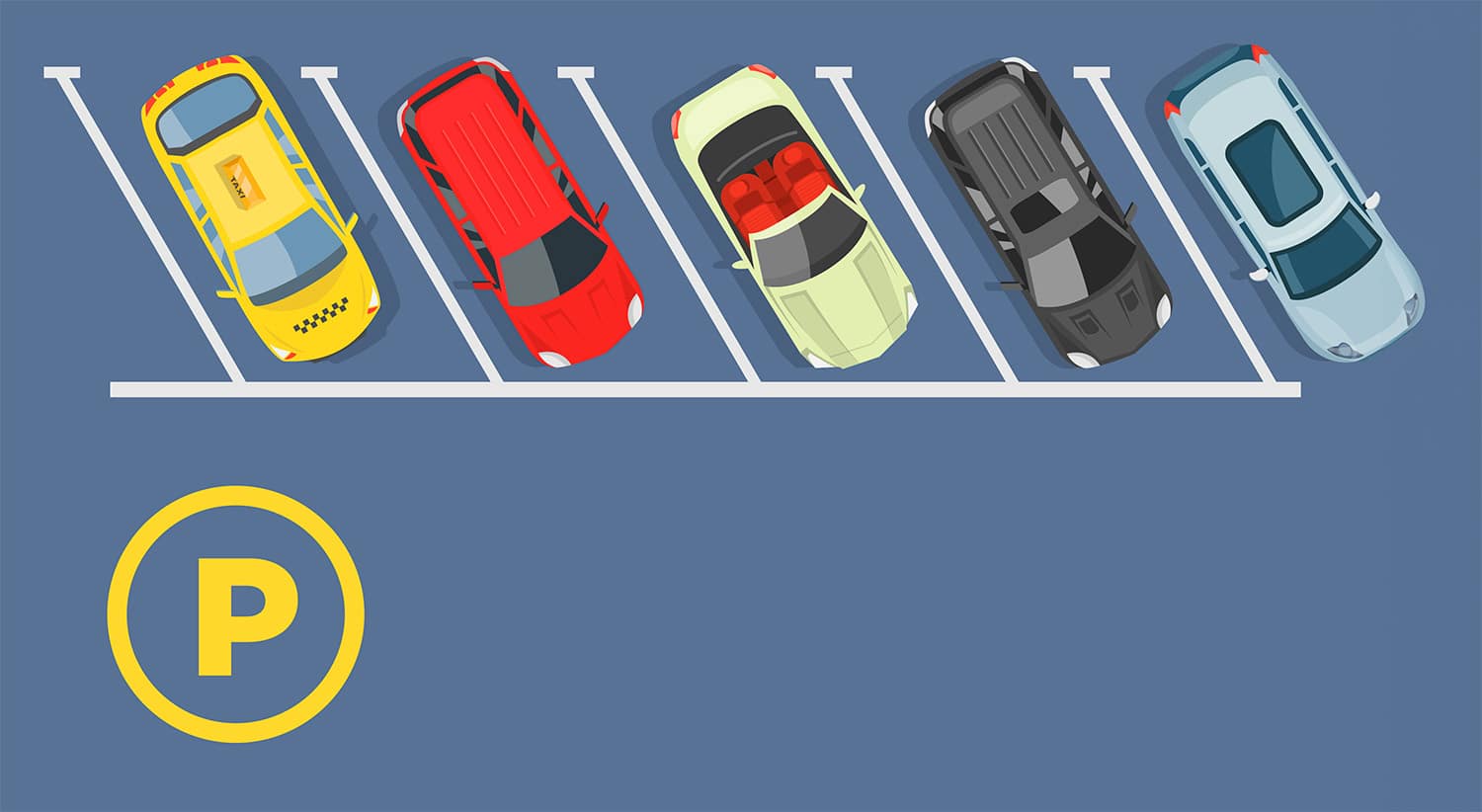
What “green” practices can we expect to see more of in the next five years?
Aside from electric and automated vehicle use, what “green” practices
Share:
Share:
shutterstock / think a
Like every other industry, parking must find ways to be more sustainable in the growing threat of climate change. Not only does the industry contribute to more car emissions, but parking lots also cause a host of environmental problems, including the heat island effects, decreased biodiversity, water pollution from runoff, and increased flooding.
Fortunately, the parking industry has created several innovative and creative solutions to help address these issues, such as permeable pavers, incorporating green and community spaces into parking lot design, and the use of more eco-friendly materials. While these solutions address the problems of parking design, the scope of the problem is much bigger—literally.
America has an estimated two billion parking spots for approximately 282 million registered vehicles. When you do the math, this comes to roughly seven parking spots for each vehicle. If you put all the nation’s parking side-by-side, you could cover the entire state of Massachusetts and still have some parking spaces left over. Not only does America’s parking footprint magnify the environmental problems of parking lot design, but it also introduces some new problems of its own.
As populations grow and parking needs increase, so do the size of parking lots. The lots isolate buildings and reduce the walkability of any area, thus encouraging even more people to drive. Parking lot maintenance is also expensive, leading developers to make up for the costs by increasing pricing, leading to higher consumer prices.
Clearly, greener parking lot design isn’t the only need; we also need to reduce parking overall. Fortunately, we can already see growth in this trend as more and more cities remove parking minimums, which has significantly influenced the modern parking landscape.
But the need for parking will vary from place to place. For every Super Wal-Mart lot that stands half empty, there is a central square or urban center lot that is overflowing. There will always be a need for parking, but there is no one-size-fits-all solution. The needs of parking are too diverse. That’s why, besides greener parking and less parking, we need to improve parking lot management, which is a far more flexible tool.
To better manage parking space, it’s crucial for businesses to get a better understanding of their parking needs. But parking needs aren’t fixed; they change based on numerous factors like time of day, day of the week and even the season. Traditionally, parking needs have been measured as the maximum number of spaces needed during peak operating times, but that’s not a complete picture. Other important things to know are the average length of a visit and how many customers come and go throughout the day. This is where the value of data comes in.
Data is one of an organization’s most valuable assets in today’s world, and parking is no exception. Modern parking solutions, from gate systems to ticketing apps, collect a range of useful data that can better inform lot owners of their parking needs and inform smarter parking policies.
shutterstock / metamorworks
Governments and municipalities can also use parking data at scale to better assess mobility needs. Reducing parking will reduce driving rates but doesn’t solve mobility issues. And if there isn’t a convenient way to get to a location, then people will stop coming, which can have a negative impact on businesses. Knowing peak times, the average length of stay, and how many people visit in a day over a larger area, like a historic downtown or shopping district, can inform officials on places that could use an extra bus stop, prime locations for light rail expansion and other alternate transportation options.
It’s estimated that around 99% of parking in the U.S. is free. While this sounds great from a consumer perspective, “free parking” is anything but. As mentioned earlier, parking leads to higher rates of driving. Free parking increases these rates and leads to traffic congestion as motorists search for a spot. Free parking lots have higher rates of parking violations when compared to paid parking lots. Free parking will also attract motorists from other businesses nearby, taking up spaces intended for your customers. It also encourages longer parking times, which is not ideal for retailers who want more turnover for their business.
A better understanding of parking needs and eliminating free parking will go a long way toward managing smaller lots efficiently, but there will always be rule-breakers.
Parking enforcement, already a crucial part of parking management, will be even more critical when there is less space. Clear signs posted throughout the lot, in addition to clear rules and instructions on any websites, are vital, especially during periods of transition. But when signs don’t work, and people disregard the rules, enforcement comes in. Consistency is key in parking enforcement. If motorists see they can get away with parking where they shouldn’t without consequence, this incentivizes them to keep doing it.
However, parking enforcement must also be convenient to keep lots running efficiently, especially as we transition to smaller ones. Traditional enforcement methods, like towing and boots, are the exact opposite. For one thing, they keep valuable spaces occupied for even longer. Sure, the violator is inconvenienced, but so are the rest of your customers. It can take hours for tow trucks or boot companies to show up and move a car, not to mention the additional emissions that come from travel for these companies. Lot owners need a solution inconvenient enough to deter people but convenient enough for consumers to resolve independently (while still paying you).
Online pay devices have become popular alternatives in recent years, enabling violators to release their vehicles by paying through an online app. Boot alternatives, like windshield obstructors, provide further convenience because they are easier to move than clunky boots. Online payment also removes the potential for conflict with parking staff by enabling consumers to handle everything themselves. Enforcement is always a last resort, but making things more user-friendly can improve the experience for everyone.
The transition from car-centric environments to more sustainable, walkable ones is necessary, but it will take time and incremental adjustment as a society. Parking is not an insular problem; it impacts the whole environment, from local businesses to waterways. We cannot think of solutions independently but must work together to address them. Fortunately, with the technology and expertise of the parking industry, we have the means to create informed strategies and implement solutions that maintain efficiency and enforce order. ◆
Parking minimums are common throughout the U.S. Introduced in the 1930s, they gained popularity throughout the post-WWII era as consumer car ownership skyrocketed and businesses and municipalities worried about overcrowding of curbside parking.
Parking minimums, also called parking mandates, require a certain number of parking spaces to be built for a new business or residential building. For example, a parking mandate could require a parking spot for every 100 square feet of retail space or two spots for every unit in an apartment building. The issue is these mandates are rarely consistent and are set at the local level.
As populations and buildings have gotten bigger, so has the size of parking lots. And the bigger the lot is, the more expensive it is to maintain. Multiple studies have found parking minimums are partly responsible for the decrease in low-income housing. Because so much land must be devoted to parking, it restricts how much usable space can be constructed. When it comes to residential buildings, the cost of parking maintenance is passed on to residents through higher rents or mortgages. Over the last ten years, along with the rising demand for more sustainable and walkable communities, cities nationwide have repealed or reduced parking minimums.
Colin J. Heffron Sr. is the Executive Chairman at Barnacle Parking.

Aside from electric and automated vehicle use, what “green” practices

Commercializing ESG in the Parking Industry

Hollywood, Florida Modernizes Its Parking By Embracing the Newest Technology


Aside from electric and automated vehicle use, what “green” practices

Hollywood, Florida Modernizes Its Parking By Embracing the Newest Technology

Parking & Mobility is IPMI’s flagship publication, covering the news, trends, analysis, technologies, and people of the parking and mobility industry, and how it affects and influences communities around the world.
| Cookie | Duration | Description |
|---|---|---|
| cookielawinfo-checkbox-advertisement | 1 year | Set by the GDPR Cookie Consent plugin, this cookie is used to record the user consent for the cookies in the "Advertisement" category . |
| cookielawinfo-checkbox-analytics | 11 months | This cookie is set by GDPR Cookie Consent plugin. The cookie is used to store the user consent for the cookies in the category "Analytics". |
| cookielawinfo-checkbox-functional | 11 months | The cookie is set by GDPR cookie consent to record the user consent for the cookies in the category "Functional". |
| cookielawinfo-checkbox-necessary | 11 months | This cookie is set by GDPR Cookie Consent plugin. The cookies is used to store the user consent for the cookies in the category "Necessary". |
| cookielawinfo-checkbox-others | 11 months | This cookie is set by GDPR Cookie Consent plugin. The cookie is used to store the user consent for the cookies in the category "Other. |
| cookielawinfo-checkbox-performance | 11 months | This cookie is set by GDPR Cookie Consent plugin. The cookie is used to store the user consent for the cookies in the category "Performance". |
| CookieLawInfoConsent | 1 year | Records the default button state of the corresponding category & the status of CCPA. It works only in coordination with the primary cookie. |
| elementor | never | This cookie is used by the website's WordPress theme. It allows the website owner to implement or change the website's content in real-time. |
| viewed_cookie_policy | 11 months | The cookie is set by the GDPR Cookie Consent plugin and is used to store whether or not user has consented to the use of cookies. It does not store any personal data. |
| Cookie | Duration | Description |
|---|---|---|
| _ga | 2 years | The _ga cookie, installed by Google Analytics, calculates visitor, session and campaign data and also keeps track of site usage for the site's analytics report. The cookie stores information anonymously and assigns a randomly generated number to recognize unique visitors. |
| _ga_02PMHW8YWC | 2 years | This cookie is installed by Google Analytics. |
| _ga_LC0QJJHM3J | 2 years | This cookie is installed by Google Analytics. |
| _ga_V9KYTSBYT2 | 2 years | This cookie is installed by Google Analytics. |
| iutk | 5 months 27 days | This cookie is used by Issuu analytic system to gather information regarding visitor activity on Issuu products. |
| Cookie | Duration | Description |
|---|---|---|
| mc | 1 year 1 month | Quantserve sets the mc cookie to anonymously track user behaviour on the website. |
| Cookie | Duration | Description |
|---|---|---|
| ultp_view_1052 | 1 day | No description |
| ultp_view_1058 | 1 day | No description |
| ultp_view_1060 | 1 day | No description |
| ultp_view_1064 | 1 day | No description |
| ultp_view_1068 | 1 day | No description |
| ultp_view_1070 | 1 day | No description |
| ultp_view_1072 | 1 day | No description |
| ultp_view_1078 | 1 day | No description |
| ultp_view_1082 | 1 day | No description |
| ultp_view_1088 | 1 day | No description |
| ultp_view_1100 | 1 day | No description |
| ultp_view_1103 | 1 day | No description |
| ultp_view_1114 | 1 day | No description |
| ultp_view_1118 | 1 day | No description |
| ultp_view_1122 | 1 day | No description |
| ultp_view_1125 | 1 day | No description |
| ultp_view_1130 | 1 day | No description |
| ultp_view_1132 | 1 day | No description |
| ultp_view_1135 | 1 day | No description |
| ultp_view_1541 | 1 day | No description |
| ultp_view_1554 | 1 day | No description |
| ultp_view_1557 | 1 day | No description |
| ultp_view_1560 | 1 day | No description |
| ultp_view_1563 | 1 day | No description |
| ultp_view_1568 | 1 day | No description |
| ultp_view_1572 | 1 day | No description |
| ultp_view_1576 | 1 day | No description |
| ultp_view_1580 | 1 day | No description |
| ultp_view_2305 | 1 day | No description |
| ultp_view_2321 | 1 day | No description |
| ultp_view_2338 | 1 day | No description |
| ultp_view_2342 | 1 day | No description |
| ultp_view_259 | 1 day | No description |
| ultp_view_270 | 1 day | No description |
| ultp_view_275 | 1 day | No description |
| ultp_view_286 | 1 day | No description |
| ultp_view_3074 | 1 day | No description |
| ultp_view_3115 | 1 day | No description |
| ultp_view_3334 | 1 day | No description |
| ultp_view_3336 | 1 day | No description |
| ultp_view_3338 | 1 day | No description |
| ultp_view_3340 | 1 day | No description |
| ultp_view_3346 | 1 day | No description |
| ultp_view_3354 | 1 day | No description |
| ultp_view_3361 | 1 day | No description |
| ultp_view_3367 | 1 day | No description |
| ultp_view_365 | 1 day | No description |
| ultp_view_367 | 1 day | No description |
| ultp_view_38 | 1 day | No description |
| ultp_view_3846 | 1 day | No description |